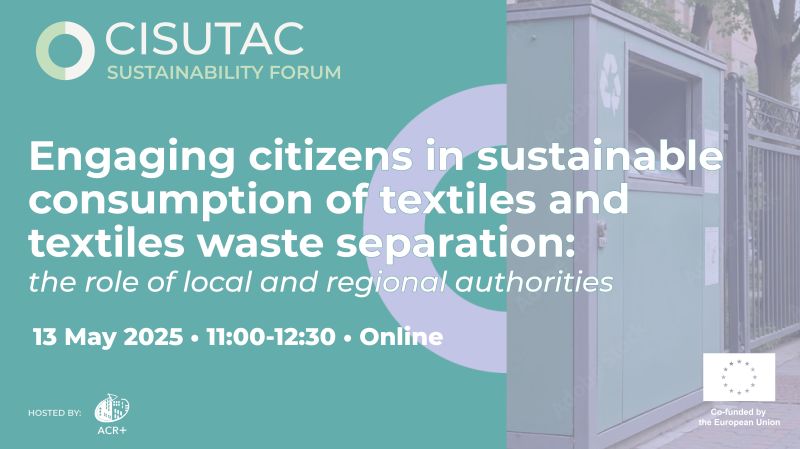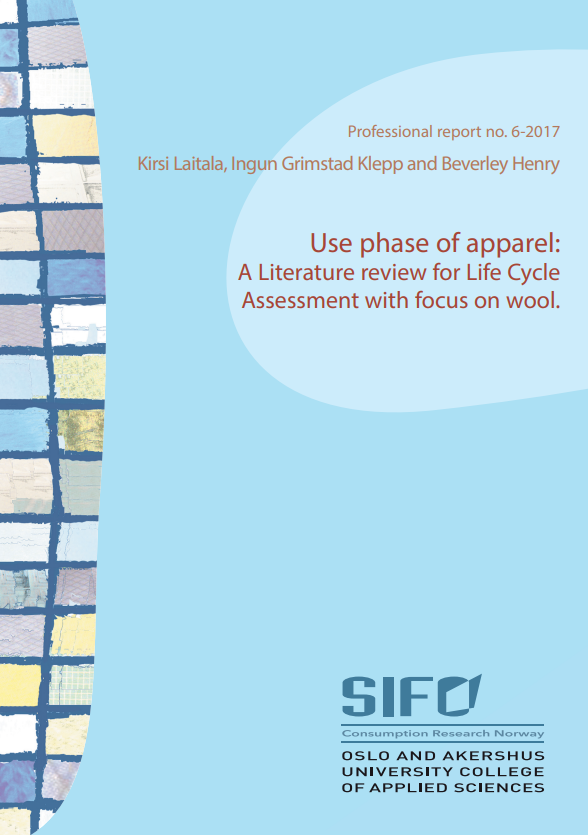CISUTAC Sustainability Forum #1: Engaging citizens in sustainable consumption of textiles and textiles waste separation
Webinar 13th May, 11 – 12:30 CET
The CISUTAC Sustainability Forum’s new webinar series is designed to inspire dialogue and share practical knowledge for a more sustainable textile sector. Sessions will bring together experts, innovators, and changemakers to explore actionable strategies for closing the loop and promoting circularity across the textile value chain. Professor Ingun Grimstad Klepp will participate in the first edition, taking place on 13 May and hosted by ACR+ (Association of Cities and Regions for Sustainable Resource Management). This session will focus on key findings related to textile waste collection. Also explored will be real-world case studies from across Europe and examining how citizen behaviour can directly impact waste prevention.
Agenda
- 11:00-11:05- Welcome & Introduction | Serena Lisai, ACR+
PART 1: ENGAGING CITIZENS IN TEXTILE WASTE SEPARATION
- 11:05-11:15 – The role of Local and Regional Authorities in engaging citizens to sort textile | Jean-Benoît Bel, ACR+
- 11:15-11:25 – Engaging inhabitants in high-rise building in textile waste separation: the experience of Gothenburg | Sandra Alm, City of Gothenburg
- 11:25-11:35 – Discussion and Q&A
PART 2: ENGAGING CITIZENS IN SUSTAINABLE CONSUMPTION
- 11:35-11:45 – Understanding consumer behaviour to drive change | Ingun Grimstad Klepp, clothing research group at Consumption Research Norway (SIFO)
- 11:45-11:55 – Redirecting communication towards circular alternatives: UNEP principles for sustainable fashion communication | Minori Lee, UNEP
- 11:55-12:05 – How to influence citizens’ textile behaviours | Martyn Lowder, WRAP
- 12:05-12:20 – Discussion and Q&A
- 12:20-12:30 – Closing remarks

